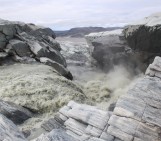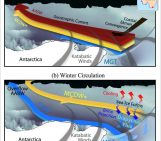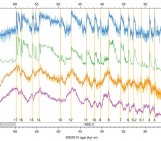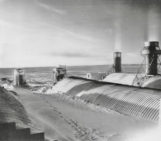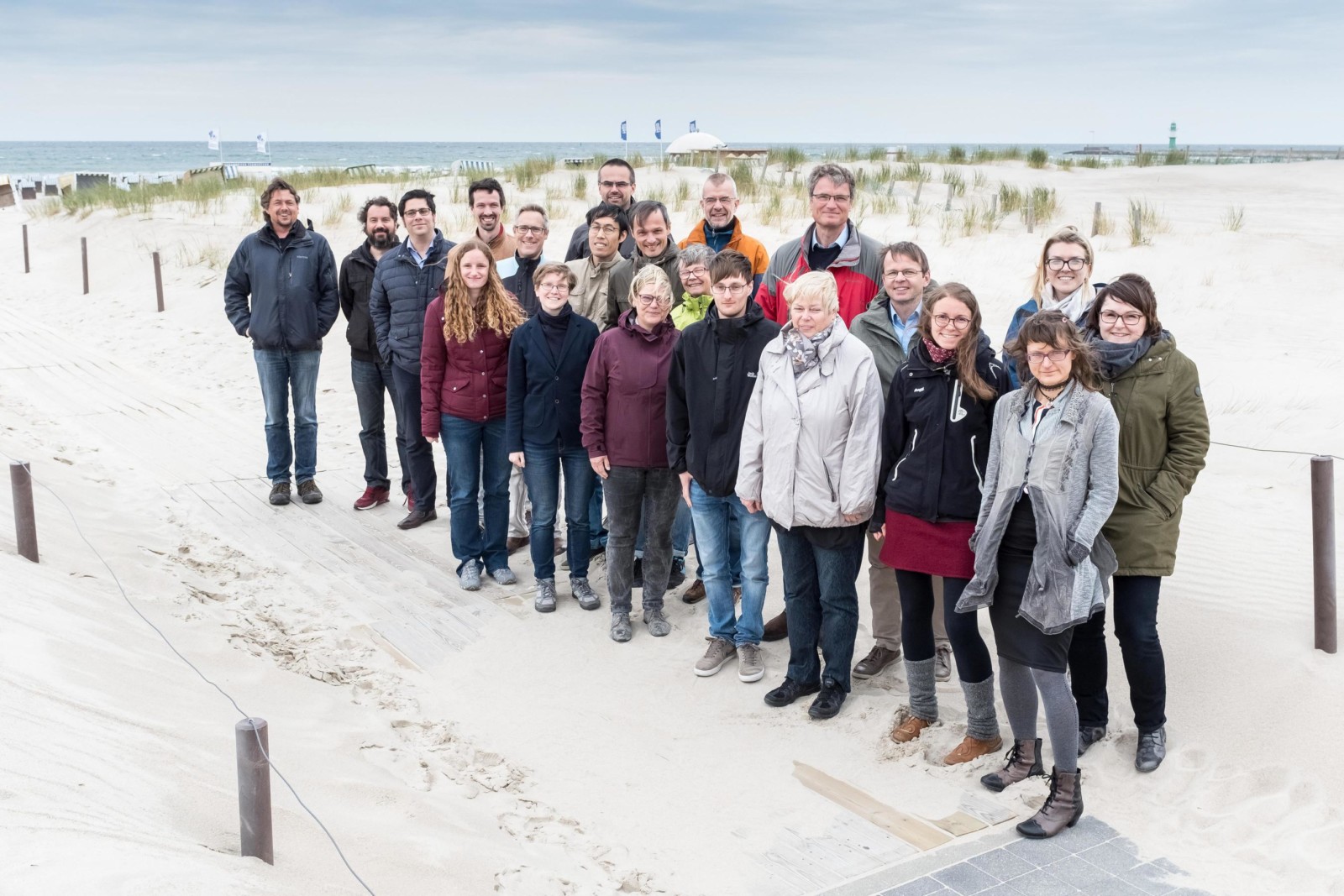
Figure 1: The GROCE project, with 11 working groups and more than 30 scientists from across Germany, aims to understand what the present-day state of the 79°N glacier in Greenland is. On a windy day in May 2019, the GROCE teams met up at the annual update meeting to present findings and discuss the next steps to understand this complex system. Photo credit: Mario Hoppman, AWI
The GROCE project, funded by the German Ministry for Education and Research (BMBF), takes an Earth-System approach to understand what processes are at play for the 79°N glacier (also known as Nioghalvfjerdsfjorden), in northeast Greenland. 79°N is a marine-terminating glacier, meaning it has a floating ice tongue (like an ice shelf) and feeds into the ocean. Approximately 8% of all the ice contained in the Greenland Ice Sheet feeds into the 79°N glacier before it reaches the ocean (Seroussi et al., 2011). Therefore, in a worst-case-scenario where it melted entirely, this would lead to 1.1 m of sea level rise (Mayer et al., 2018). In recent years, the glacier’s ice flow to the ocean has increased in speed (Khan et al., 2014) and at the same time, the atmosphere at the surface in the region has warmed by 3°C over the last 40 years (Turton et al., 2019). This means that the 79°N glacier is being affected by both the warming atmosphere and the warming ocean simultaneously and will therefore be highly sensitive to future climate changes. However, without understanding its current state through accurate monitoring, predicting what the future may hold for this glacier is difficult.
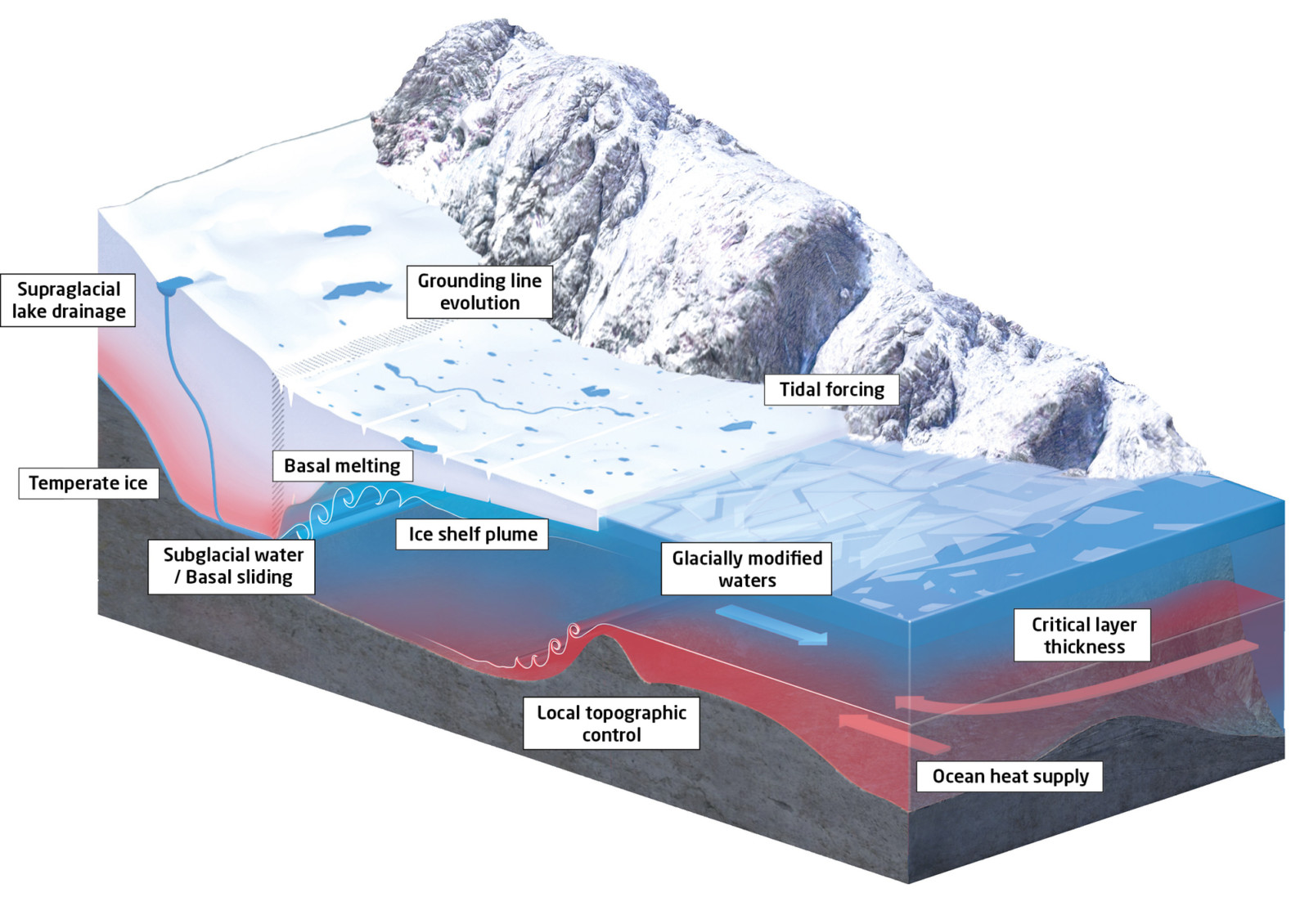
Figure 2: The 79°N glacier and its floating tongue respond to warm waters coming from the surrounding ocean, producing melt-water which circulates underneath the floating tongue. In turn, the less saline melt-water affects and changes the large-scale ocean circulation itself. Simultaneously, at the surface, a warming atmosphere leads to more surface melt-water, some of which drains to the base of the glacier. Infographic credit: Mario Hoppman/AWI/Martin Künsting.
We are 11 different working groups, all attempting to understand the 79°N glacier, each group investigating a different, but complementary, aspect of the glacier. Our investigations include: the interactions between the atmosphere and the ice, the ocean circulation around the ice tongue, melting at the surface of the ice, melting near the bedrock beneath the ice, the location of the grounding line (where the ice meets the ocean and starts to float to form the floating ice tongue), tidal processes and many more (see Figure 2 for some of these processes). The 11 working groups, which includes 34 scientists and PhD students from 8 universities and research institutes, are spread all over Germany: from FAU University of Erlangen-Nürnberg (most southerly) to IOW (Leibniz Institute for Baltic Sea Research Warnemünde) (see Figure 3 for a map of the locations of all the research groups). The project is about to enter its third and final year, which means a lot of exciting new results are emerging from the project and there will be many more to come…

Figure 3: The locations of the 8 main partner universities and research institutions involved in the GROCE project. Figure made with google my maps.
If you’re interested in learning more about the GROCE project, its members or research outcomes, you can find a lot of information on our website: www.groce.de.

Figure 4: Jenny Turton reports on the progress made in regional atmospheric modelling efforts within the last year during the progress meeting in May 2019. Photo credit: Mario Hoppman, AWI
Edited by Marie Cavitte
 Jenny Turton is a post-doc researcher in the climate system research group at Friedrich-Alexander University (FAU) in Erlangen. She currently investigates the interaction between the atmosphere and the cryosphere. More specifically, her current research focuses on the link between atmospheric processes and the glacier surface of 79°N glacier in northeast Greenland.
Jenny Turton is a post-doc researcher in the climate system research group at Friedrich-Alexander University (FAU) in Erlangen. She currently investigates the interaction between the atmosphere and the cryosphere. More specifically, her current research focuses on the link between atmospheric processes and the glacier surface of 79°N glacier in northeast Greenland.

